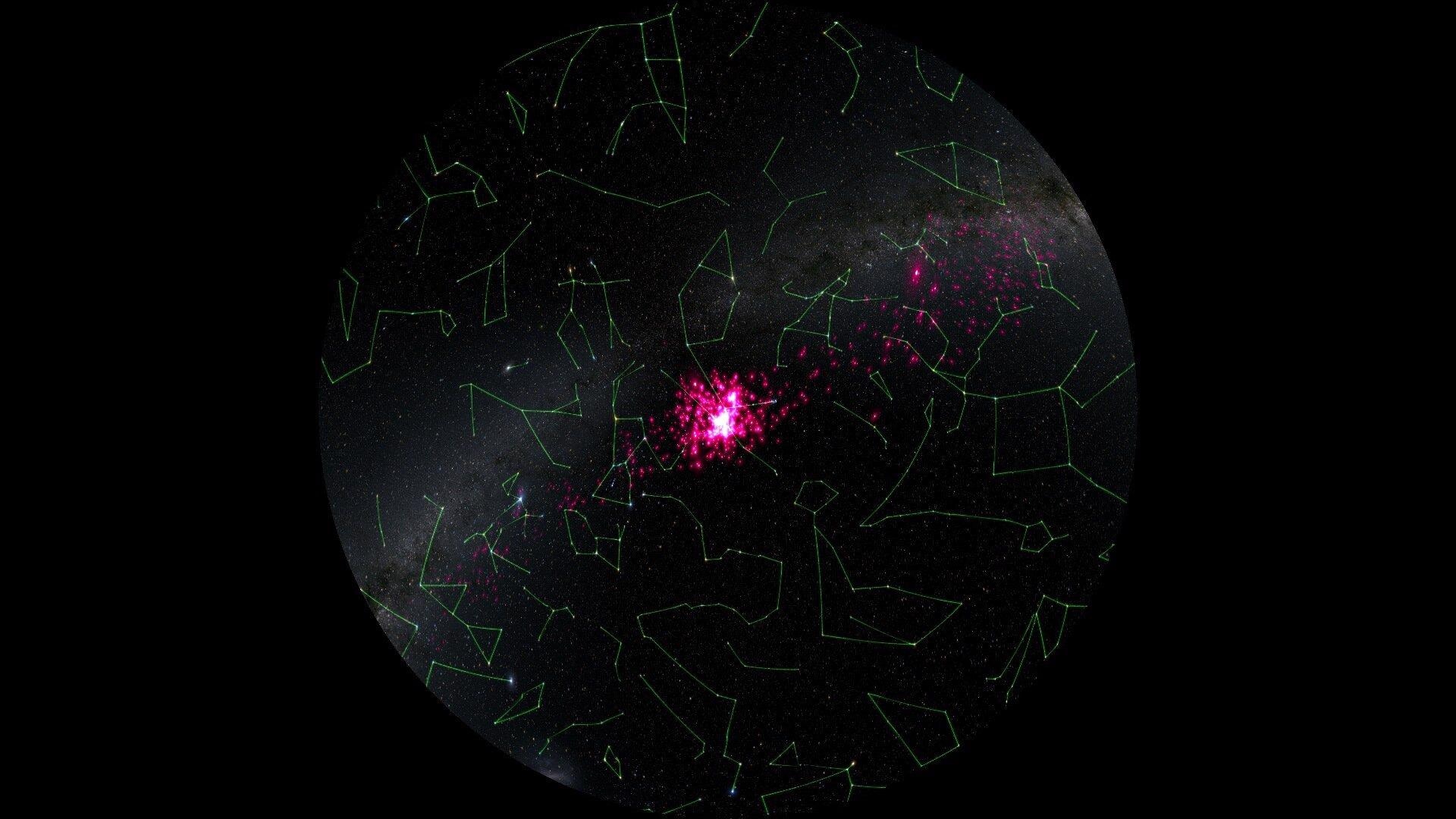Mar 25 2021
Data obtained from the European Space Agency’s Gaia star-mapping satellite has demonstrated interesting evidence that the closest cluster of stars to the Sun is being disturbed by the gravitational effect of a huge but unobserved structure in the Milky Way galaxy.
 The Hyades and their tidal tails. Image Credit: European Space Agency.
The Hyades and their tidal tails. Image Credit: European Space Agency.
If this turns out to be true, this could offer proof for the so-called population of “dark matter sub-halos.” Such invisible particle clouds are believed to be remnants from the formation of the Milky Way galaxy, and are currently distributed across the galaxy, constituting an unseen substructure that applies a perceptible gravitational effect to anything that comes too close.
The discovery was made by Tereza Jerabkova, a Research Fellow from the European Space Agency, and by collaborators from the European Space Agency and the European Southern Observatory while they were investigating the way a nearby cluster of stars is combining into the general background of stars in the Milky Way galaxy.
The finding was based on Gaia’s Early third Data Release (EDR3) and data obtained from the second release.
The researchers focused on the Hyades because it is the closest cluster of stars to the Sun. Situated just over 153 light-years away, Hyades can be easily observed by skywatchers staying in both southern and northern hemispheres as a visible ‘‘V” shape of luminous stars marking the head of the bull in the constellation of Taurus.
Apart from the easily discernable luminous stars, telescopes have exposed 100 or so fainter stars confined in a spherical area of space located about 60 light-years across.
A cluster of stars will naturally lose stars because when these stars shift inside the cluster, they tend to pull at one another gravitationally.
This continuous tugging somewhat alters the velocities of the stars, moving a few stars to the borders of the cluster. And from there, the stars can be dragged by the gravitational pull of the galaxy, creating a couple of long tails.
While one tidal tail follows the cluster of stars, the other tail pulls out ahead of it. These are called tidal tails and have been extensively analyzed in colliding galaxies; however, none has ever visualized these tails from a close by open star cluster, until quite recently.
The key to identifying the tidal tails is to find out which kinds of stars in the sky are traveling analogously to the cluster of stars. This is made easy by the Gaia satellite because it is accurately quantifying the movement and distance of over a billion stars in the Milky Way galaxy.
These are the two most important quantities that we need to search for tidal tails from star clusters in the Milky Way.
Tereza Jerabkova, Research Fellow, European Space Agency
While other researchers had made similar attempts in the past, they achieved only limited success. This is because they had only searched for stars that closely corresponded with the movement of the cluster of stars. This does not include members that moved earlier in the 600–700 million-year history and, hence, are currently moving on different orbits.
To figure out the range of orbits to search for, Tereza built a computer model that would replicate the numerous perturbations that would probably be felt by the escaping stars in the cluster during their countless number of years in space.
The researchers ran this code and subsequently compared the simulations to the actual data to demonstrate the real extension of the Hyades tidal tails. Within the Gaia data, Tereza and collaborators observed thousands of previous members. Such stars currently stretch for thousands of light-years throughout the galaxy in a pair of massive tidal tails.
However, the actual surprise was that the trailing tidal tail appeared to be the elusive stars. This suggests that something much more serious is occurring than the cluster of stars gently “dissolving.”
Tereza once again ran the simulations and demonstrated that the data can possibly be reproduced if that tidal tail had crashed with a cloud of matter comprising around 10 million solar masses.
There must have been a close interaction with this really massive clump, and the Hyades just got smashed.
Tereza Jerabkova, Research Fellow, European Space Agency
But the team is clueless about this specific clump. A gas cloud or a massive nearby star cluster was never observed before. If no perceptible structure is identified even in upcoming targeted searches, that object is likely to be a dark matter sub-halo, suggested Tereza.
These clumps of dark matter occur naturally and are assumed to help mold the galaxy at the time of its formation. This latest study demonstrates how the Gaia satellite is allowing astronomers to map out this unseen dark matter framework of the galaxy.
With Gaia, the way we see the Milky Way has completely changed. And with these discoveries, we will be able to map the Milky Way’s sub-structures much better than ever before.
Tereza Jerabkova, Research Fellow, European Space Agency
After demonstrating the new method with the Hyades, Tereza and collaborators are currently extending the study by searching for tidal tails from other, more remote clusters of stars.
Locating the Hyades tidal tails
Locating the Hyades tidal tails. Video Credit: European Space Agency.
Journal Reference:
Jerabkova, T., et al. (2021) The 800pc long tidal tails of the Hyades star cluster: Possible discovery of candidate epicyclic over-densities from an open star cluster. Astronomy and Astrophysics. doi.org/10.1051/0004-6361/202039949.